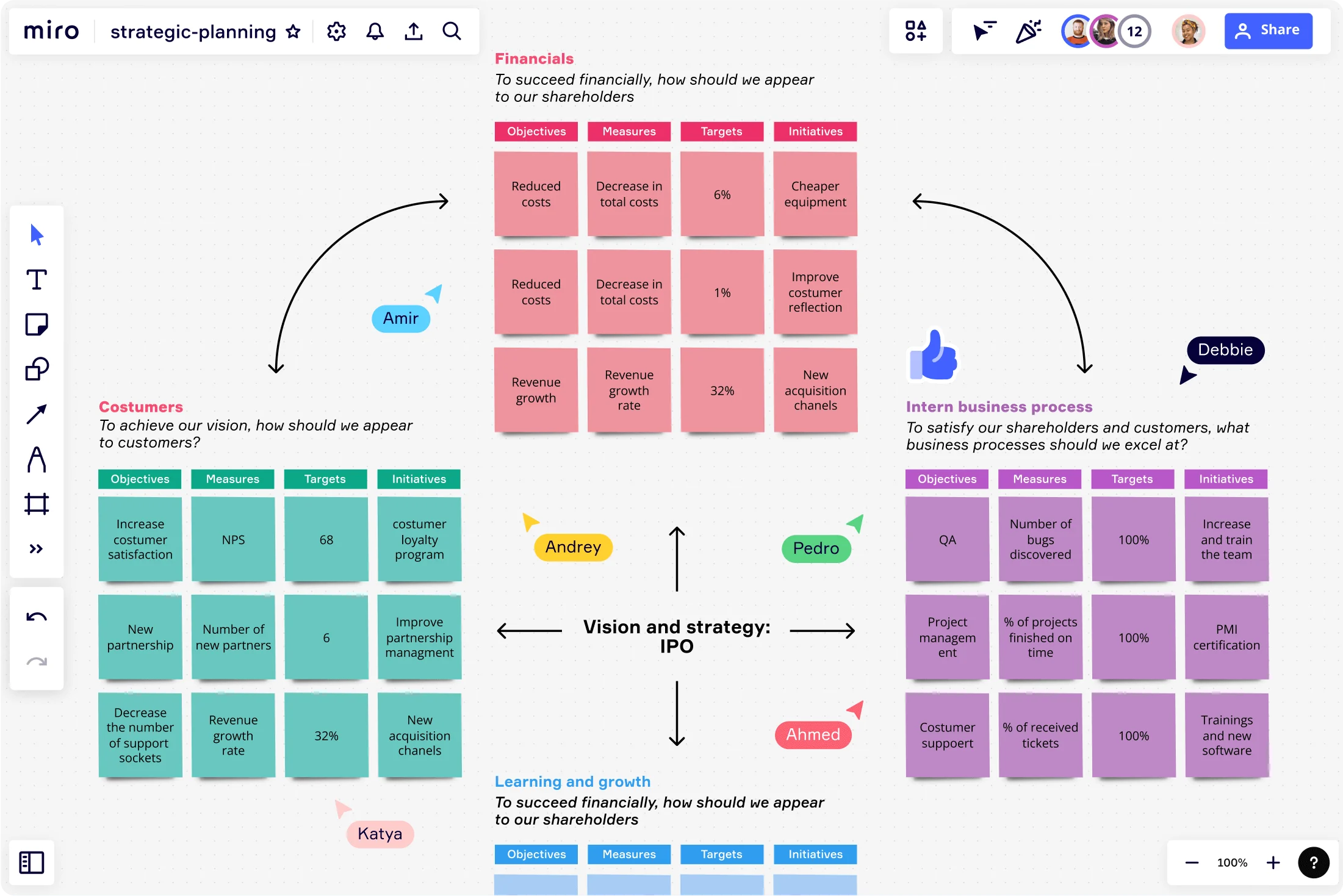
What are Porters Four Competitive Strategies?

Summary
In this guide, you will learn:
The four competitive strategies defined by Porter: Cost Leadership, Differentiation, Cost Focus, and Differentiation Focus
How Cost Leadership aims to become the lowest-cost producer to compete on price across the whole market
How Differentiation focuses on offering unique products or services that justify premium pricing and build customer loyalty
The Focus strategies target specific market niches, either through cost advantage (Cost Focus) or unique offerings (Differentiation Focus) +
The importance of choosing one clear strategy to avoid losing competitive advantage by trying to do both cost leadership and differentiation simultaneously
A step-by-step approach to applying these strategies by analyzing the competitive landscape, assessing company capabilities, selecting the best fit strategy, and detailing its execution for sustainable advantage
Understanding Porter's Four Competitive Strategies
In business strategy, many corporations have established and employed various approaches. One of the most influential and long-standing frameworks is Porter's Four Competitive Strategies, proposed by the esteemed Harvard Business School professor Michael E. Porter. This straightforward yet compelling method offers businesses a reliable roadmap to carve out their competitive stance.
An overview of Porter's Four Competitive Strategies
Porter's Four Competitive Strategies form a blueprint that assists businesses in establishing a competitive edge. These strategies are:
1. Cost Leadership
In this approach, the objective is to become the most cost-efficient producer in the industry. Emphasis is placed on factors such as efficiency, cost reduction, market dominance, and scale.
2. Differentiation
This strategy focuses on creating unique products or services that distinguish a business in the market. It gives importance to aspects like quality, innovation, customer service, or any other distinctive attributes.
3. Cost Focus
The cost focus strategy parallels cost leadership, with the difference being that it targets a particular market segment or niche. The aim is to emerge as the most cost-effective provider within this segment.
4. Differentiation Focus
Similar to cost focus, this strategy concentrates on a specific market niche but seeks to dominate it by offering specialized, unique products or services.
The importance of Porter's Four Competitive Strategies
The competitive ecosystem of any industry is inherently complex, teeming with numerous variables and fluctuating conditions. A clear and well-defined strategy is essential for a company to navigate this challenging environment effectively.
Porter's Four Competitive Strategies provide a robust framework for shaping such strategies. Businesses can clarify their strategic position by organizing strategies into these four types. This helps in deciding whether to compete on the basis of cost (cost leadership or cost focus) or differentiation (differentiation or differentiation focus) and whether to target the entire market or focus on a specific niche.
Adopting and implementing one of these strategies enable companies to attain a sustainable competitive advantage. This essentially means establishing a unique market position that competitors find challenging to imitate or counter.
How to use Porter's Four Competitive Strategies
Using Porter's model, formulating a strategy entails understanding the market, competitors, and the company's capabilities. Here is a quick guide to help you in creating such a strategy:
1. Examine the Competitive Landscape Start by analyzing the industry and the competitive dynamics. Grasp the key factors driving competitiveness, such as price, quality, service, technology, or brand.
2. Recognize Unique Capabilities Evaluate the company's strengths and weaknesses. What does the company do better than others? What areas need improvement? Are there any resources or capabilities that could be leveraged to attain a competitive advantage?
3. Choose a Strategy Select one of the four strategies that align with the company's objectives based on understanding the market and the company's unique capabilities. Beware of attempting to compete on both price and differentiation across the entire market, a scenario Porter warns could lead to a loss of focus and competitiveness.
4. Detail the Strategy: Once a strategy has been chosen, describe it in detail. For instance, define how efficiencies and cost savings will be achieved if the company pursues cost leadership. If the focus is on differentiation, specify what makes the offering unique and how this will be communicated to customers.
The final act: Implementing the strategy
The ultimate evaluation of any strategy lies in its implementation. Here are some suggestions for implementing a strategy inspired by Porter's model:
Communicate the strategy Ensure that every member of the organization understands the strategy, including the reasons for its selection and its benefits to the company. This promotes alignment and motivation.
Create an action plan Try one of Miro's action plan templates and recompose the strategy into specific actions. Assign responsibility, establish a timeline, and allocate necessary resources for each action.
Monitor and adjust Keep track of the progress in relation to the strategic objectives. Be prepared to modify the strategy or its implementation as market conditions evolve or new opportunities emerge.
Leverage collaborative tools Miro helps with effective collaboration, visualization of strategic plans, and progress tracking. It facilitates communication, team alignment, and strategic initiative management.
In conclusion, Porter's Four Competitive Strategies provide a powerful framework for any business aiming to carve a niche for itself in the market. Understanding these strategies, choosing the most suitable one, and executing it effectively can position a company for success in its chosen market. It's important to remember that strategy formulation is not a one-off event but a continuous, iterative process that requires ongoing attention and adjustment. Maintaining strategic focus and agility can steer a business toward enduring success.
Author: Miro Team Last update: August 12, 2025